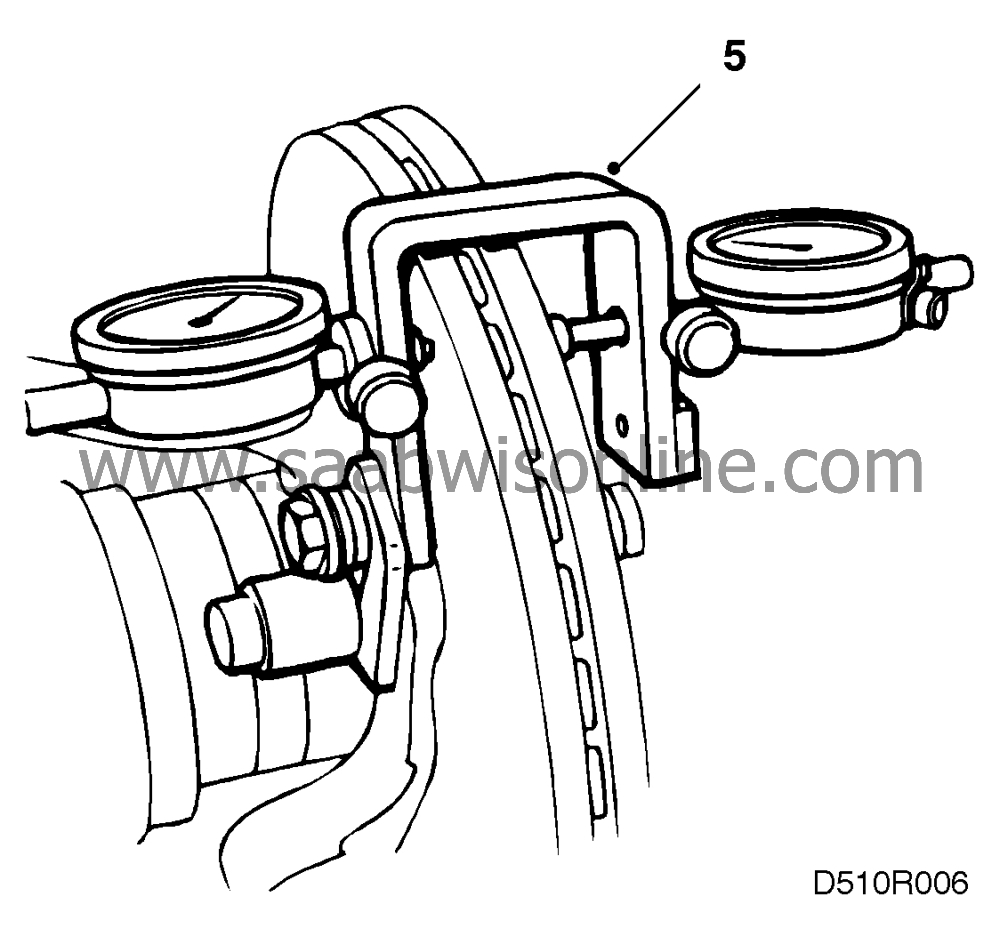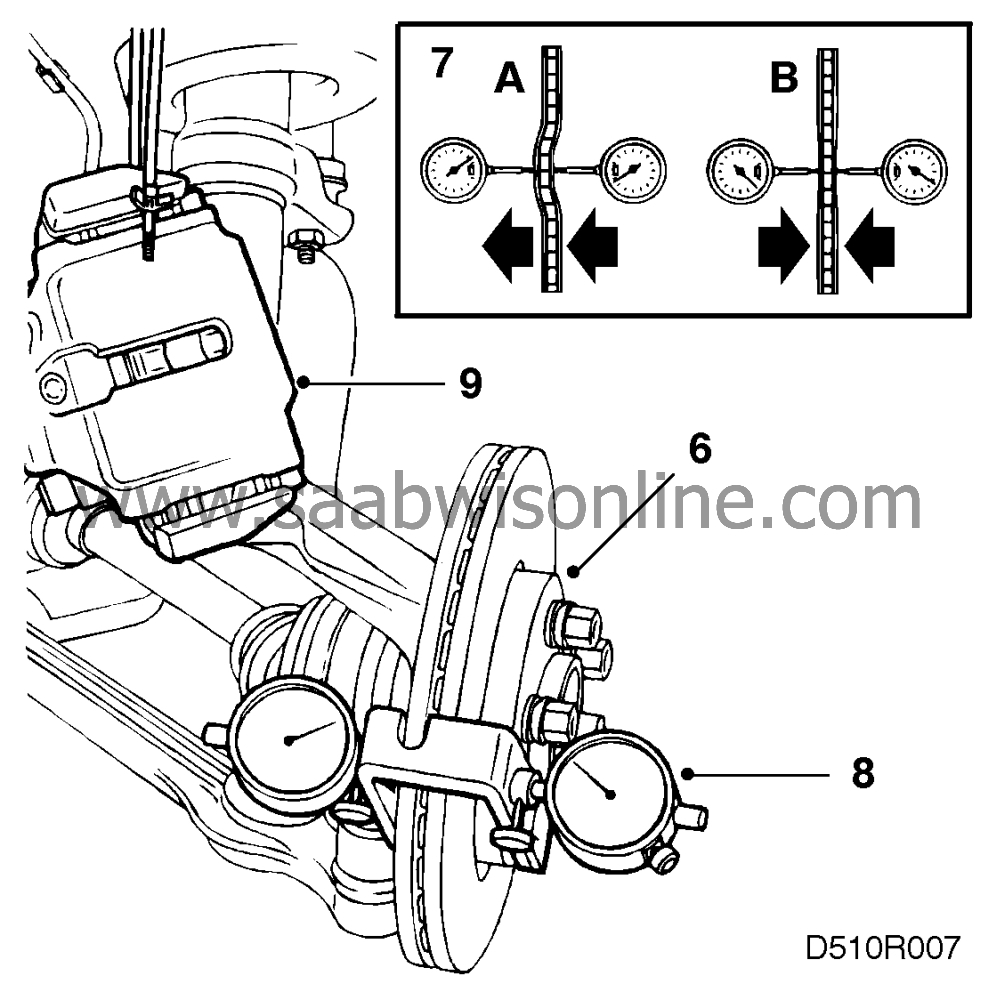Checking for lateral runout andvariation in thickness
|
|
Checking for lateral runout and
variation in thickness
|
|
1.
|
Lift the car and remove the front
wheels.
|
|
2.
|
Start performing the check measurement on one side. Press in the brake piston
using a pair of grips.
|
|
3.
|
Remove the brake caliper and bind it to the spring strut using a cable tie.
|
|
4.
|
Fit the five wheel studs with the four washers on each wheel studs. The washers
have part no. 80 73 124.
|
|
5.
|
Fit the measuring clamp on the lower securing lug for the brake caliper. Secure
the measuring dials. The measuring dials have part no. 78 40 622.

|
|
6.
|
Rotate the brake disc and at the same time watch the outer measuring
dial. Reset both dials when the outer shows the maximum negative effect.

|
|
7.
|
Rotate the disc and read of the dials. Note the runout (A) and the variation in
thickness (B).
|
|
8.
|
Remove the dials, measuring clamp and wheel studs with washers.
|
|
9.
|
Fit the brake caliper, lock the stud threads with Locktite and tighten.
Tightening torque 80 Nm (59 lbf ft)
|
|
10.
|
Fit the wheels and tighten the wheel studs.
Tightening torque
- light alloy wheels 117 Nm (86.6 lbf ft)
- pressed steel wheels 100 Nm (74 lbf ft)
|
|
11.
|
Repeat this method of measurement on the other front wheel.
|
|
12.
|
When the measurements have been completed, lower the car and press the
brake pedal to press out the brake pads.
|





